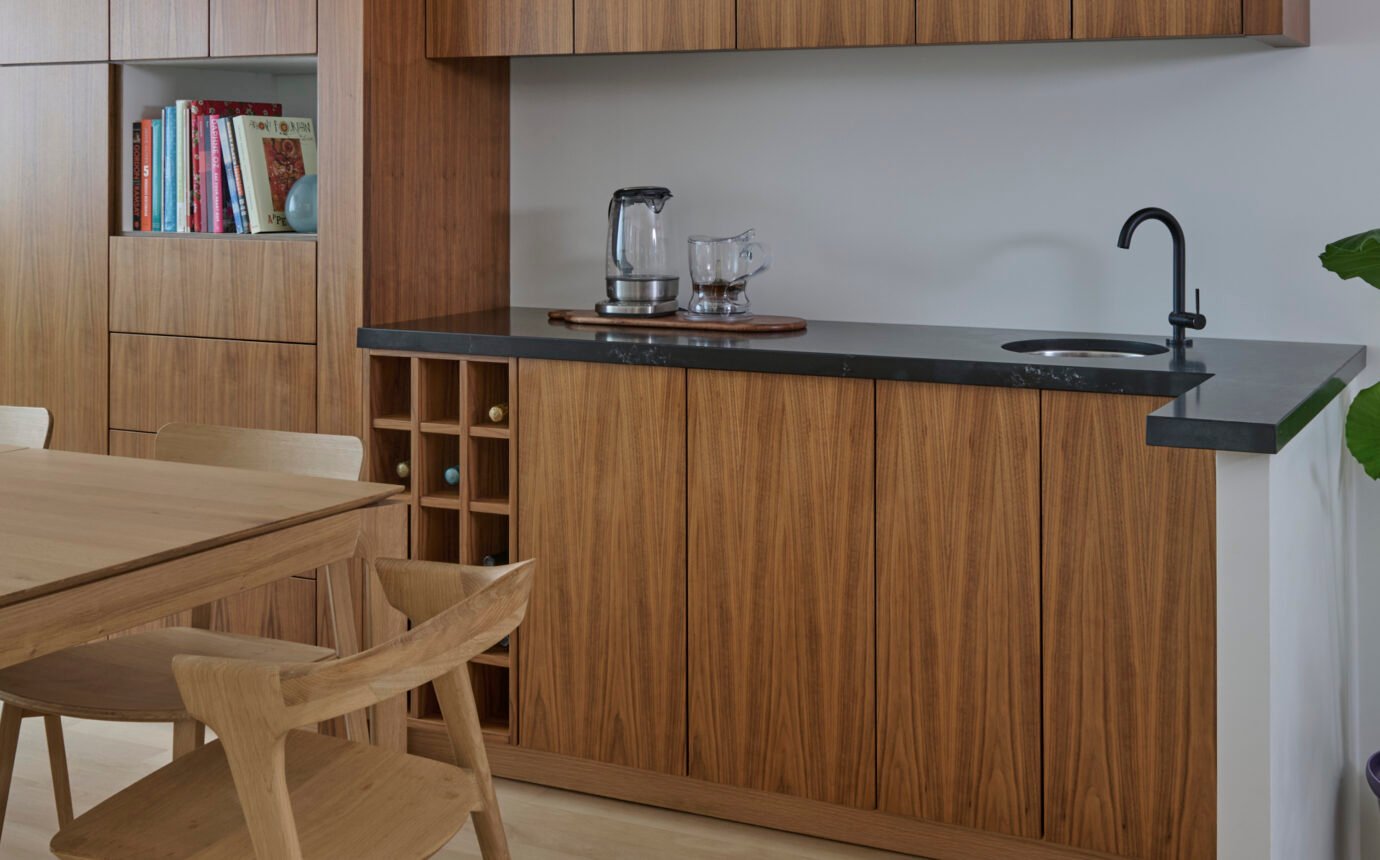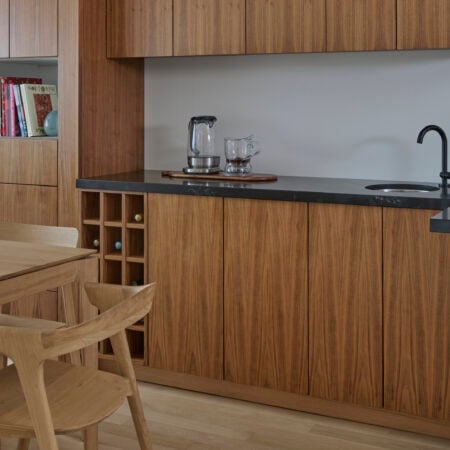Wood Kitchen Ideas Inspired by a Toronto Remodel


In this downtown Toronto home by Duncan Patterson Architecture, walnut and white oak combine for a kitchen that’s warm, refined, and quietly impactful
Wood can bring quiet drama to a kitchen when it’s used thoughtfully. In this Little Portugal renovation by Duncan Patterson Architecture (dPA), the material does more than offer visual warmth—it defines space, balances tone, and carries a strong sense of tactility throughout the home’s main floor. Designed for a middle-aged couple transitioning from a large family home to an urban semi, the kitchen anchors a new central core within the house, surrounded by open riser stairs, full-height cabinetry and a light-filled multipurpose space known as the Big Table Room. But it’s the millwork details, material transitions and clever use of contrast that make this kitchen a compelling case study in how to make an impact with wood.
Center the Kitchen—Literally
Rather than tucking it into the rear of the house, Patterson placed the kitchen in the centre of the main floor. “I really like that as a strategy,” he says, noting it allows for seamless connections between the front living area, backyard-facing dining space and the stairwell, which spans all three levels. The move establishes the kitchen as the home’s gravitational core, encouraging flow while also carving out room for stillness. “We wanted it to feel like an eddy space,” says Patterson—somewhere you could pause, not just pass through.
Mix (Don’t Match) Your Woods
The project uses two primary wood types—walnut and white oak—but they’re deployed in clearly defined roles, offering plenty of inspiration for those seeking wood kitchen ideas that feel intentional rather than overwhelming. The walnut, used for cabinetry, millwork and island panelling, brings depth and richness. It’s framed by accents of white oak, which appears on the flooring, baseboards and as a modernized crown detail that neatly “holds” the walnut millwork. This framing detail repeats in the adjacent Big Table Room, where a low-profile baseboard and upper band of oak create visual continuity across zones.
The result is layered, not loud. “If I had used a darker wood for the baseboards, the walnut wouldn’t have as much punch,” says Patterson. The light oak helps the darker wood read as intentional, almost architectural.
Let Your Details Do the Talking
Simple but precise details make the kitchen feel tailored rather than busy. Electrical outlets are hidden on the underside of the upper cabinets, keeping the backsplash clean. That backsplash—made of the same black quartz used on the counters—rises right to the underside of the cabinetry. “I was pretty excited about doing that,” says Patterson. “It gives the space a real clarity.”
The quartz also wraps the island in a waterfall edge, and its soft white veining plays beautifully against the vertical grain of the walnut. Even the placement of the window within the backsplash was carefully calculated, almost lining up flush with the countertop. “We tried,” says Patterson, “and it’s close—just a slight lip up into the sill.”
Use Storage to Blur the Kitchen Boundary
Along the length of the Big Table Room, floor-to-ceiling walnut cabinetry continues the kitchen’s material language, while offering flexible storage that suits the home’s new rhythms. There’s space for a printer, paper, a food processor—even a small wine collection. A black quartz counter and integrated sink create a casual coffee station and bar setup, keeping clutter out of the main cooking area.
Because it’s finished in the same walnut as the kitchen, this wall of cabinetry feels like part of a unified whole. “It just reads as the edge of the room,” Patterson says. “It doesn’t feel like an imposition.”
Light It From Above—and All Around
To bring daylight deep into the home, dPA installed an 11-foot commercial skylight over the stairwell. Thanks to open risers and minimal picket railings, the light travels uninterrupted from the third floor to the basement. “That connection really benefits the kitchen,” Patterson says, which now feels more expansive than its footprint suggests. Executed as a collaboration between Scott Stevenson of Stevenson Renovations and Reno Ruth, the build reflects the project’s emphasis on precision and flow. At the back of the home, a full-height window frames views of the garden, while the door was strategically relocated to the side yard—ensuring the Big Table Room doesn’t become a corridor.
Make It Personal
As with the rest of the house, the kitchen is rich with quiet touches that reveal themselves over time. Patterson points to the staircase—especially its finely fabricated handrail—as one such detail. “It’s the handshake of the house,” he says. “It should feel soft as butter.” Like the walnut cabinetry or the thin line of white oak tracing the room, it’s designed to be touched, used, and loved.























